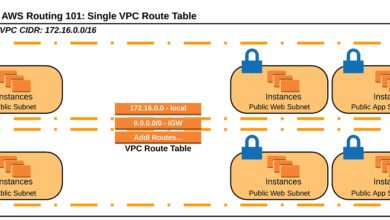AWS Athena: 7 Powerful Insights for Data Querying Mastery
Imagine querying massive datasets in seconds—without managing a single server. That’s the magic of AWS Athena. This serverless query service lets you analyze data directly from S3 using standard SQL, making big data accessible to everyone.
What Is AWS Athena and How Does It Work?

AWS Athena is a serverless query service that allows users to analyze data stored in Amazon S3 using standard SQL. It’s built on the open-source Presto engine and enables interactive analytics without requiring infrastructure setup or cluster management.
Serverless Architecture Explained
Unlike traditional data warehouses, AWS Athena operates on a serverless model. This means there are no servers to provision, maintain, or scale. When you submit a query, Athena automatically executes it using a distributed query engine that scales on demand.
- No upfront infrastructure costs
- Automatic scaling based on query complexity and data volume
- Pay-per-query pricing model
“Athena removes the heavy lifting of data infrastructure so you can focus on insights.” — AWS Official Documentation
Integration with Amazon S3
AWS Athena is deeply integrated with Amazon S3, allowing you to run SQL queries directly on data stored in buckets. It supports various file formats including CSV, JSON, Parquet, ORC, and Avro.
When a query is executed, Athena reads the data from S3, processes it, and returns results in seconds. The service uses metadata stored in the AWS Glue Data Catalog to understand the schema of your data.
Query Engine: Presto Under the Hood
AWS Athena is powered by a customized version of Presto, an open-source distributed SQL query engine designed for running interactive analytic queries against large datasets. Presto was originally developed at Facebook and is known for its speed and efficiency.
Key features of Presto in AWS Athena include:
- Low-latency queries even on petabyte-scale data
- Support for complex joins and aggregations
- Ability to query multiple data sources simultaneously
Key Features of AWS Athena That Set It Apart
AWS Athena stands out in the crowded analytics space due to its simplicity, scalability, and deep integration with the AWS ecosystem. Let’s explore the standout features that make it a go-to solution for modern data teams.
Fully Managed and Serverless
One of the biggest advantages of AWS Athena is that it’s fully managed. You don’t need to worry about patching, updating, or monitoring servers. AWS handles all the backend operations, including query execution, resource allocation, and fault tolerance.
This makes it ideal for organizations that want to avoid the operational overhead of managing clusters or data warehouses.
Standard SQL Support
AWS Athena supports ANSI SQL, which means anyone familiar with SQL can start querying data immediately. This lowers the learning curve and enables data analysts, engineers, and even business users to extract insights without needing specialized tools.
Common operations like SELECT, JOIN, GROUP BY, and window functions are all supported, making it easy to perform complex analytics.
Integration with AWS Glue Data Catalog
The AWS Glue Data Catalog acts as a central metadata repository for Athena. It stores table definitions, schemas, and partition information, enabling Athena to understand the structure of your data in S3.
You can manually create tables using DDL statements or let AWS Glue crawlers automatically infer the schema from your data files. This integration simplifies data discovery and governance.
How to Get Started with AWS Athena: Step-by-Step Guide
Getting started with AWS Athena is straightforward. Whether you’re a beginner or an experienced data engineer, this step-by-step guide will help you run your first query in minutes.
Step 1: Prepare Your Data in Amazon S3
Before querying, ensure your data is stored in an S3 bucket. Organize your files logically—preferably partitioned by date, region, or category—to improve query performance and reduce costs.
Supported formats include:
- CSV (Comma-Separated Values)
- JSON (JavaScript Object Notation)
- Parquet (Columnar format for efficient storage)
- ORC (Optimized Row Columnar)
- Avro (Row-based format with schema evolution)
For optimal performance, consider converting your data to Parquet or ORC, which offer better compression and faster query execution.
Step 2: Set Up the AWS Glue Crawler
Navigate to the AWS Glue Console and create a crawler. Point it to your S3 bucket, define the IAM role, and let it scan your data. The crawler will automatically detect the schema and populate the Data Catalog with table definitions.
Alternatively, you can manually create tables using the Athena console with CREATE TABLE statements.
Step 3: Run Your First Query in Athena
Open the Athena console, select your database, and write a simple SQL query. For example:
SELECT * FROM my_database.sales_data LIMIT 10;
Click “Run Query” and view the results instantly. Athena will process the data, display the output, and show the execution time and cost.
Performance Optimization Tips for AWS Athena
While AWS Athena is fast by design, query performance and cost depend heavily on how your data is structured and queried. Here are proven strategies to optimize both.
Use Columnar File Formats (Parquet, ORC)
Storing data in columnar formats like Parquet or ORC significantly improves query performance. These formats store data by columns rather than rows, allowing Athena to read only the relevant columns during a query.
Benefits include:
- Reduced I/O operations
- Better compression ratios
- Faster query execution
Tools like AWS Glue ETL jobs or Spark can convert your existing data into Parquet format.
Partition Your Data Strategically
Partitioning divides your data into smaller, manageable chunks based on a key (e.g., date, region). When you query partitioned data, Athena scans only the relevant partitions, reducing the amount of data processed.
Example S3 structure:
s3://my-bucket/sales/year=2023/month=04/day=05/
To query data for April 5, 2023:
SELECT * FROM sales_data WHERE year = '2023' AND month = '04' AND day = '05';
This avoids scanning the entire dataset.
Compress Your Data
Compressing data files reduces the amount of data transferred from S3 to Athena, lowering both cost and execution time. Supported compression formats include GZIP, Snappy, and BZIP2.
For example, compressing a 10 GB CSV file to GZIP can reduce it to 1–2 GB, cutting query costs by up to 90%.
Pricing Model: How Much Does AWS Athena Cost?
AWS Athena follows a simple pay-per-query pricing model. You’re charged based on the amount of data scanned per query, not the execution time or infrastructure usage.
Cost Calculation: $5 per TB of Data Scanned
The standard rate is $5.00 per terabyte (TB) of data scanned. If your query scans 100 GB, the cost is:
(100 / 1024) * $5 ≈ $0.49
This makes Athena highly cost-effective for ad-hoc queries and small datasets.
Ways to Reduce Athena Costs
Since cost is tied to data scanned, minimizing scan volume is key. Effective strategies include:
- Convert data to columnar formats (Parquet/ORC)
- Apply partitioning to limit scanned data
- Use compression (GZIP, Snappy)
- Avoid
SELECT *—query only needed columns - Create bucketed tables for high-volume datasets
Cost vs. Alternatives: Athena vs. Redshift vs. EMR
Compared to Amazon Redshift (data warehouse) or EMR (big data processing), Athena is cheaper for infrequent or exploratory queries. Redshift requires upfront cluster provisioning and hourly fees, while EMR involves managing clusters and long-running jobs.
Athena shines when you need quick insights without long-term commitments.
Security and Access Control in AWS Athena
Security is critical when dealing with sensitive data. AWS Athena integrates with multiple AWS security services to ensure data protection and compliance.
IAM Policies for Fine-Grained Access
You can control who can run queries, access databases, or view results using AWS Identity and Access Management (IAM). Create IAM policies that grant permissions to specific users or roles.
Example policy allowing Athena access:
{
"Version": "2012-10-17",
"Statement": [
{
"Effect": "Allow",
"Action": [
"athena:StartQueryExecution",
"athena:GetQueryResults"
],
"Resource": "*"
}
]
}
Encryption: Protecting Data at Rest and in Transit
AWS Athena supports encryption for both data in S3 and query results. You can enable:
- SSE-S3 or SSE-KMS for data at rest in S3
- Client-side encryption before uploading to S3
- SSL/TLS for data in transit during query execution
Query result sets can be stored in an encrypted S3 bucket to prevent unauthorized access.
Audit Logging with AWS CloudTrail
All Athena API calls are logged in AWS CloudTrail, providing a complete audit trail of who ran which queries and when. This is essential for compliance with regulations like GDPR, HIPAA, or SOC 2.
You can set up CloudWatch alarms to monitor suspicious activity or excessive query usage.
Real-World Use Cases of AWS Athena
AWS Athena is used across industries for a variety of analytical workloads. Here are some real-world scenarios where it delivers significant value.
Log Analysis and Monitoring
Companies use Athena to analyze application logs, server logs, and VPC flow logs stored in S3. For example, you can query CloudFront access logs to identify traffic patterns or detect bot activity.
Example query:
SELECT status, COUNT(*) FROM cloudfront_logs GROUP BY status;
This helps DevOps teams troubleshoot issues and optimize performance.
IoT Data Analytics
IoT devices generate massive amounts of time-series data. Athena allows you to query sensor data stored in S3 to detect anomalies, monitor device health, or analyze usage trends.
With partitioning by timestamp, you can efficiently query data from specific time windows.
Business Intelligence and Reporting
Business analysts use Athena as a backend for BI tools like Amazon QuickSight, Tableau, or Looker. By connecting these tools to Athena, they can create dashboards and reports without moving data.
This enables real-time decision-making based on up-to-date data in S3.
Advanced Capabilities: Federated Queries and Machine Learning
AWS Athena has evolved beyond simple S3 queries. It now supports federated queries and integrates with machine learning services for advanced analytics.
Federated Query: Access Multiple Data Sources
Athena Federated Query allows you to run SQL queries across multiple data sources, including:
- Amazon RDS (MySQL, PostgreSQL)
- Amazon DynamoDB
- Amazon Redshift
- On-premises databases via AWS Lambda
This eliminates the need to move data into S3 for analysis. You can join data from S3 with live transactional data in RDS in a single query.
Integration with AWS Machine Learning
You can use Athena to prepare and query data for machine learning models. For example, extract training data from S3, clean it using SQL, and feed it into Amazon SageMaker.
Athena also supports querying ML model outputs stored in S3, enabling you to analyze predictions and model performance.
Using Athena with AWS Lake Formation
AWS Lake Formation simplifies data lake setup and governance. When integrated with Athena, it provides centralized access control, data cataloging, and security policies.
You can define fine-grained permissions (e.g., row-level or column-level security) and enforce them across Athena queries.
Common Challenges and How to Overcome Them
While AWS Athena is powerful, users often face challenges related to performance, cost, and data organization. Here’s how to tackle them.
Slow Query Performance
Slow queries are usually due to inefficient data formats or lack of partitioning. To fix this:
- Convert data to Parquet/ORC
- Implement partitioning by time or category
- Use projection to avoid full table scans
Unexpected High Costs
Cost spikes often occur when queries scan large amounts of data. Prevent this by:
- Setting up query result limits
- Using workgroups to enforce cost controls
- Monitoring data scanned per query via CloudWatch
Data Schema Evolution Issues
When source data changes (e.g., new columns), Athena may fail to read it. Use AWS Glue Schema Registry to manage schema versions and ensure backward compatibility.
What is AWS Athena used for?
AWS Athena is used to run SQL queries on data stored in Amazon S3 without needing to manage servers. It’s commonly used for log analysis, business intelligence, IoT data analytics, and ad-hoc data exploration.
Is AWS Athena free to use?
AWS Athena is not free, but it has a pay-per-query pricing model at $5 per TB of data scanned. The first 10 TB per month are free under the AWS Free Tier. You only pay for the data your queries actually scan.
How fast is AWS Athena?
AWS Athena is optimized for fast, interactive queries. Most queries return results in seconds, especially when data is stored in columnar formats like Parquet and properly partitioned. Performance depends on data size, format, and complexity of the query.
Can Athena query data outside of S3?
Yes, with Athena Federated Query, you can query data from sources like Amazon RDS, DynamoDB, Redshift, and even on-premises databases using Lambda functions. This allows joining S3 data with live operational databases in a single SQL query.
How does Athena integrate with BI tools?
AWS Athena integrates seamlessly with BI tools like Amazon QuickSight, Tableau, Looker, and Power BI via JDBC/ODBC drivers. This allows users to build interactive dashboards and reports directly on S3 data without data movement.
AWS Athena revolutionizes how organizations interact with data in the cloud. By combining serverless architecture, SQL simplicity, and seamless S3 integration, it empowers teams to gain insights without infrastructure overhead. Whether you’re analyzing logs, building dashboards, or running federated queries, Athena offers a scalable, cost-effective solution. With best practices in data formatting, partitioning, and security, it becomes a cornerstone of modern data lakes. As AWS continues to enhance its capabilities—especially in federated querying and machine learning integration—Athena remains a powerful tool for data-driven innovation.
Recommended for you 👇
Further Reading:









